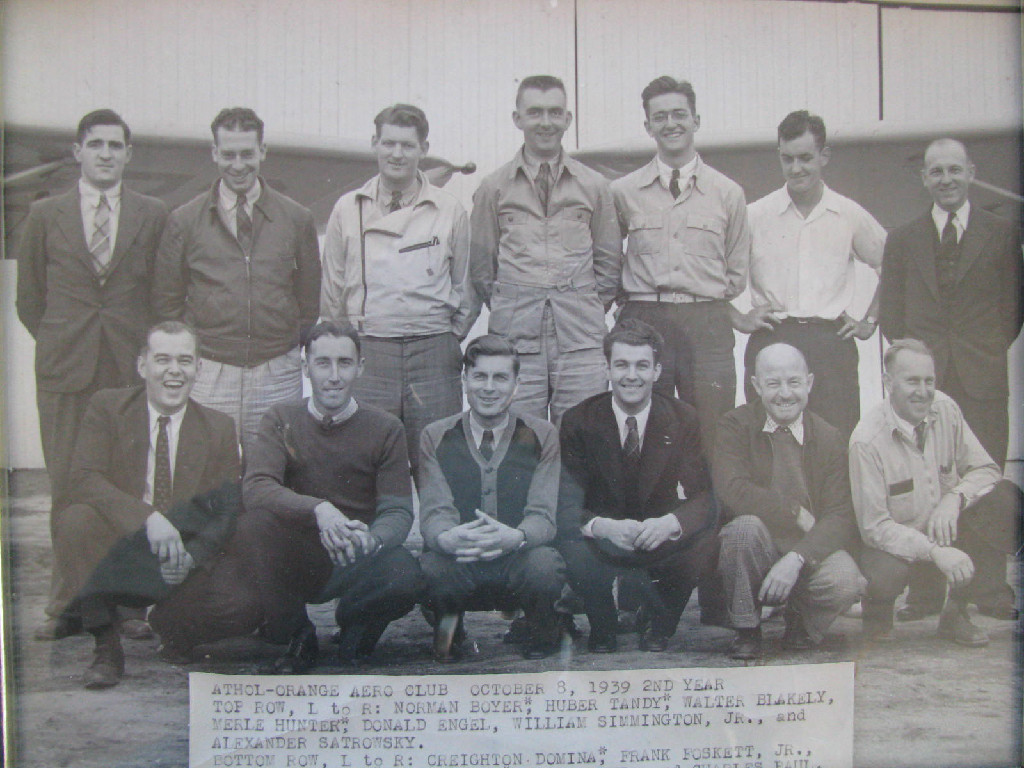
Flying like is used to be. That’s the best way to describe the Athol Orange Aero Club. Located in north-central Massachusetts, not far from the New Hampshire border, the club was founded 81 years ago and not much has changed.
The club was established in October 1937 and started with a J-2 Taylor Cub and a J-3 Piper Cub that members could use for $2 per hour wet. Today the club has four aircraft – a 1972 Cessna 172, a 1961 Cessna 150 with the fast back (no rear window) and straight tail, and two vintage taildraggers that qualify as Light Sport Aircraft – a 1941 Taylorcraft BL-65 (see this month’s Aircraft Spotlight) and a 1946 Aeronca Champ, which the club purchased new and has been operating continuously for 72 years. Until a few years ago, the club also had a 1949 Piper Clipper, which it purchased in 1950 and flew continuously until selling it to a member.
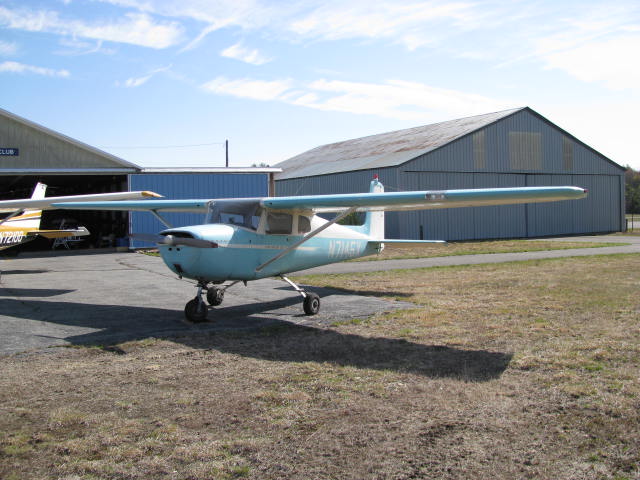
If you get the sense the club holds onto things, you’re right. “We’ve got all the paperwork on everything pretty much back to the day the club was formed,” Club Vice President and Secretary Doug Mowry said. “It’s a hoot to go through this stuff.” Doug’s also the de facto club historian.
Athol Orange’s costs are also something out of yesteryear. “I’m almost afraid to share that information because it’s ridiculously cheap. So we’re a little bit of a time warp,” Doug said. “It’s $2,000 to get into the club and the rates haven’t changed in a very long time.”
Dues are only $15 a month, and rates range from $35 an hour for the Taylorcraft and Champ, to $51 for the C-150, and just $75 for the C-172. And that’s with fuel!
“The rates are too low,” Doug said. “Given the costs of everything – fuel, keeping the lights on as it were for the club, maintenance, parts—especially on older planes, parts are more expensive. Everyone acknowledges we need to look at the rates. I’m working with the treasurer and we’re going to be going through an analysis of actual cost of ownership. Those rates are going to change.”
One of the reasons the club is able to maintain low rates is it doesn’t have any debt. It owns all four airplanes, as well as two buildings that provides room for five airplanes, a clubhouse, parts room, and maintenance space. Athol Orange also has its own fuel farm.
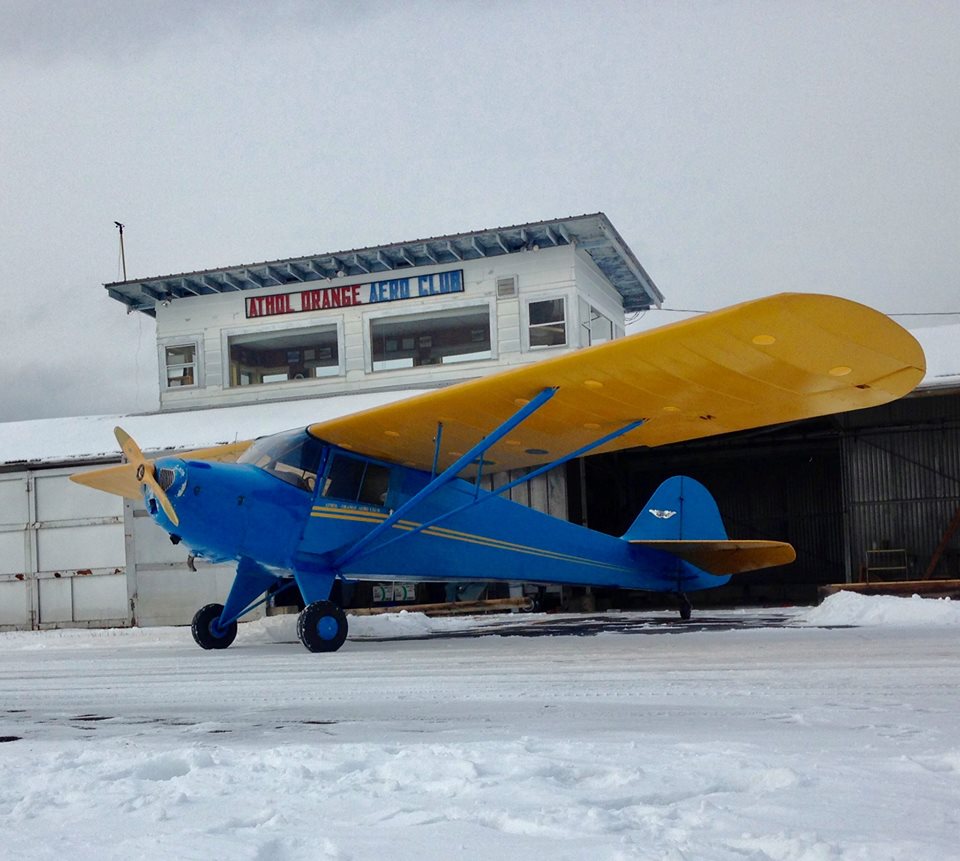
The original building was a two bay hangar that the club built in the late 1940s. “You know how I said we save everything,” Doug said. “I’ve got the sales brochure for the hangar and the bill of lading for the shipment from 1947.”
It was a do it yourself hangar that came with all the beams, angle iron, nuts and bolts, corrugated aluminum and doors to put up two T-hangars side-by-side. In 1957 they added a third bay to it, so it’s like three T-hangars side-by-side. In the third bay in the cavities on either side of the tail, the club built a small maintenance shop room with work benches and tools, and on the other side they built a parts room.
In cavity of the first hangar in the T-spot between the planes, they built the clubhouse, which has a second floor to it. Across the taxiway they built a more traditional hangar in the mid-1980s that can hold two planes, and has more storage.
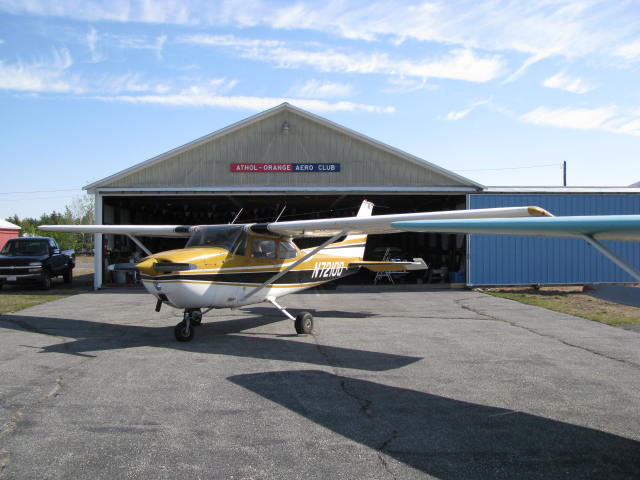
The fuel farm is only for club aircraft and the tank holds about 2,500 gallons. Depending on how much they are able to fly, which can vary quite a bit in the northeast because of weather, the club will fill the tank once or twice a year. Buying in bulk generally saves about ten cents a gallon. However, because the tank isn’t very big, it’s not cost effective to schedule a delivery unless they combined it with other local airports that also need a delivery.
By owning its airplanes, hangars and clubhouse, as well as the fuel farm, Athol Orange and its 45 members are able to enjoy the four aircraft at an incredibly low rate. But affordable flying isn’t the only reason members are part of the club.
A social club for local people
“It was designed to be, like a lot of clubs back in the day, a social thing as well as an aviation thing,” Doug said. “There is a long history of members of the club being friends, socializing, hanging out together and running the club as an enterprise of people who love to fly and care about maintaining the club.”
The club was started with local people in mind. The Orange Municipal Airport (KORE), where the club is based, straddles the town line between Athol and Orange. The original bylaws said you had to live in Athol, Orange, or one of the immediate surrounding towns. It was a local club.
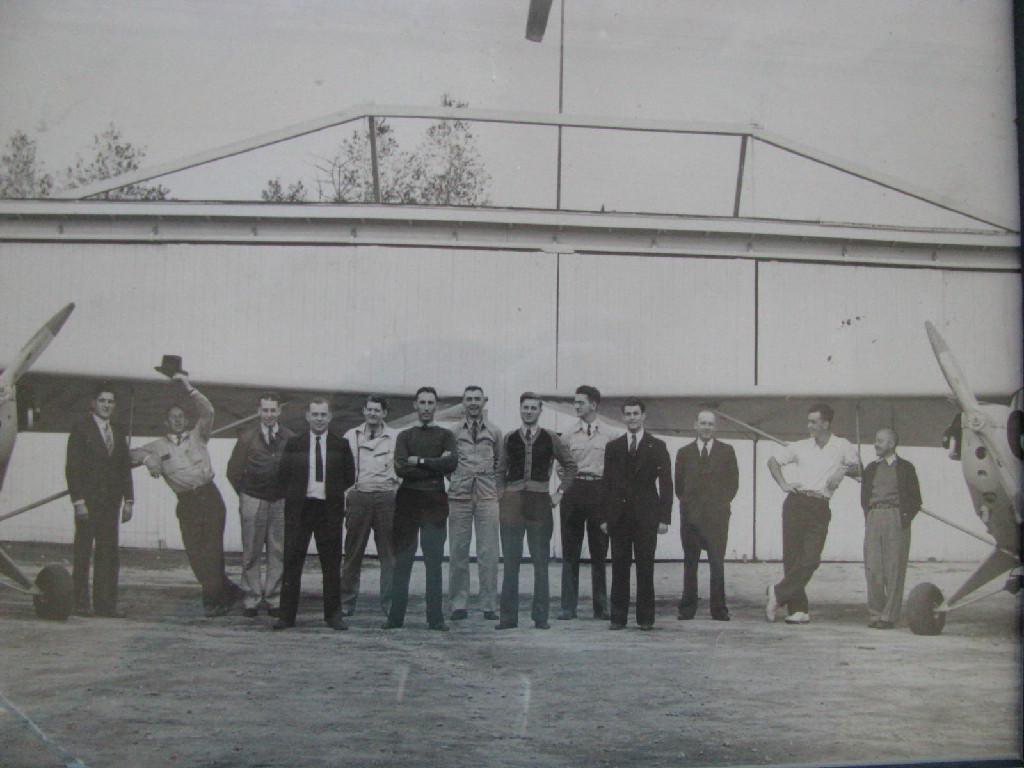
About five years ago, the club recognized that the only way to continue to attract new members was by expanding the membership eligibility. The bylaws were amended to allow people from more distance towns to join, but preference is given to those residing in Athol, Orange, or the immediate surrounding towns.
“Like a lot of things, there weren’t a lot of people in the immediate area that wanted to join and fly. That’s just aviation in general,” Doug said. “To keep the club going, they opened that up and allowed other people to join, which is how I joined. I’m in Douglas, which is about an hour and fifteen minutes away. We have a number of other members who are further away now.”
Allowing members from a greater distance also meant other changes. The scheduling system had been about as simple as you get. If you wanted to reserve an aircraft, you wrote your name on a whiteboard in the clubhouse noting the aircraft and when you wanted to fly. That’s fine if you live near the airport. But for Doug and others that are more than an hour away, they would have to call someone and ask them to make a reservation on the board.
That wasn’t practical, so about four or five years ago the club got an online scheduler. They chose Goboko, which is basic, but free. The club doesn’t do billing, payments, or logging hours online, just booking the aircraft. “We keep it simple. Every plane has a little three by five note pad in it and you write your name, the date, and the amount of time you flew,” Doug said.
Many of the operating procedures may seem antiquated, but it works for the Athol Orange Aero Club. Over the years they have bought and sold planes a number of times, and recently there has been some talk of possibly adding another four-seat aircraft that is well suited for longer trips.
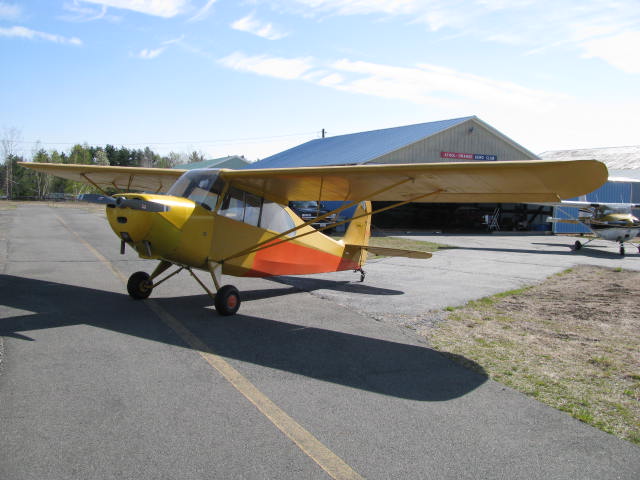
As it stands now, the club’s fleet is well positioned to attract future members while holding onto the historic culture of the club. The mix of having aircraft like the Cessna 150 and 172 with the two taildraggers that are both LSAs, gives the club the ability to appeal to a broad range of people – from someone looking for the experience of flying a vintage aircraft, to those who are flying with a Sport Pilot certificate, to pilots looking for a group of likeminded aviators who enjoy the camaraderie of the aviation community. No matter what the motivation, Athol Orange Aero Club has stayed true to its roots and offers members to experience aviation the way it used to be.
| Name | Athol Orange Aero Club |
| Location | Orange Municipal Airport (KORE), Athol, MA |
| https://www.facebook.com/Athol-Orange-Aero-Club-111601085537399/ |
|
| Year formed | 1937 |
| Aircraft |
1941 Taylorcraft BL-65 ($35/hr) |
| Joining fee | $2,000 initiation fee |
| Monthly dues | $15 per month |
| Membership | Approximately 45 |
| Scheduler | Goboko.com |